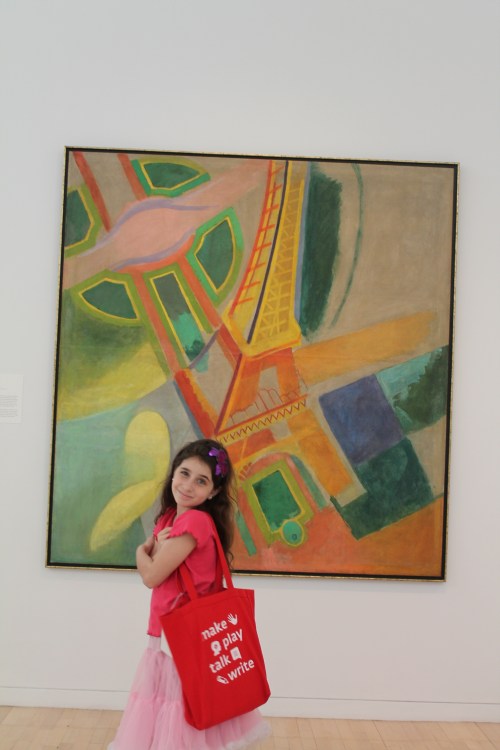Last summer, resident kid whisperer, Leah Hanson, asked me to step in to teach one of her Toddler Art classes. I had observed Leah’s Early Learning programs in the past and thought it would be a cinch. After all, Leah made it look easy!
Her classes were like the scene of Edward Hicks’ The Peacable Kingdom. Teaching her class would be a breeze! Right?

Edward Hicks, The Peaceable Kingdom, c. 1846-1847, Dallas Museum of Art, The Art Museum League Fund
…WRONG!
There was nothing “peaceable” about the scene that ensued. In fact, it much more closely resembled Michelangelo’s Torment of Saint Anthony, on view at the Kimbell Art Museum in Fort Worth.
Deeply humbled by the experience, I returned to Leah’s classes to watch with a much more observant eye. While she made the classes look easy, Leah was carefully employing mindful techniques to help her class go smoothly.
Here’s what I learned:
Don’t just give the rules, explain them

Any child who has ever taken a class with Leah is ready to tell you, “We have oils in our skin that are good for us, but bad for the art. That’s why we don’t touch the art!” Give the agency of rules to the child by asking them to help you be the protector of the art.
Keep your cool

With a group of excited children, it can be tempting to raise your voice level to be heard over them. This is a downward spiral. As you get louder, the kids will also get louder and pretty soon you will be at a full cacophony. Instead, lower your voice until you’re in a whisper. The kiddos will quiet down to hear your “secret” information.
Speak their language

Think back. Way back. Remember when your teacher would tell you to fold your paper “hotdog style” or sit “crisscross applesauce” and you knew exactly what she meant? Especially with toddlers, it’s important to know that you are being understood, not just heard. Don’t know kid lingo? Befriend an elementary school teacher to teach you the ropes!
Ask about it

Instead of trying to interpret a child’s artwork on your own (and risk misinterpreting it!), ask them to tell you about their work of art. You will be amazed by what you find out!
Play isn’t a bad word

Museums are often thought of as solemn places, where education takes precedent over entertainment. But at the DMA, we believe that play is important too! Cognitive research has revealed that play is the central device for exploring and learning, developing new skills, and making connections with others. Playing thoughtfully with children will also help nurture their natural curiosity and creativity.
Be specific in your praise

Instead of saying, “That’s a great painting” try to take a closer look at the child’s artwork and find a specific quality to praise, such as “I love how you combined straight lines and zig zag lines in your painting”. This will encourage you to look more closely at the artwork and the child will appreciate your attentive eye.
I returned to the Early Learning programs with these tips and tricks and was amazed at how well the next class went. Practice Leah’s approach and you, too, will be kid whispering in no time!
Emily Wiskera
McDermott Intern for Family and Access Teaching



































